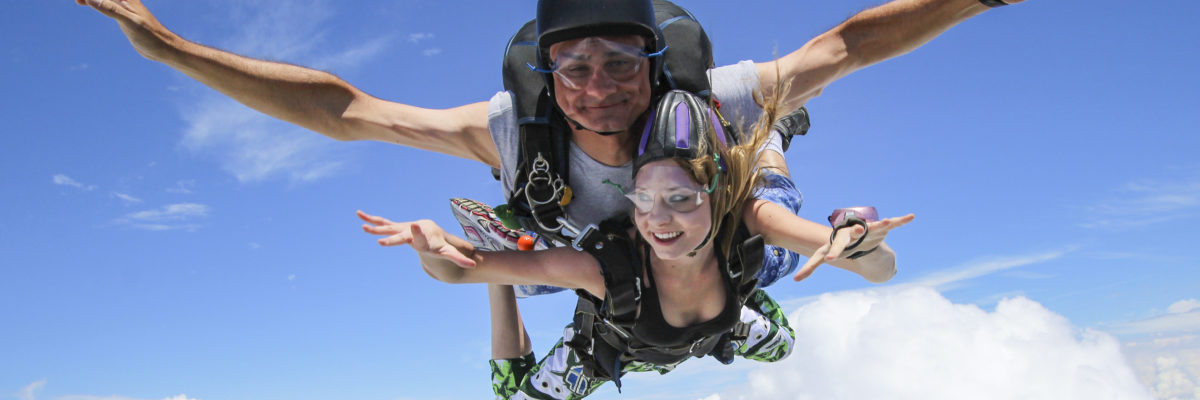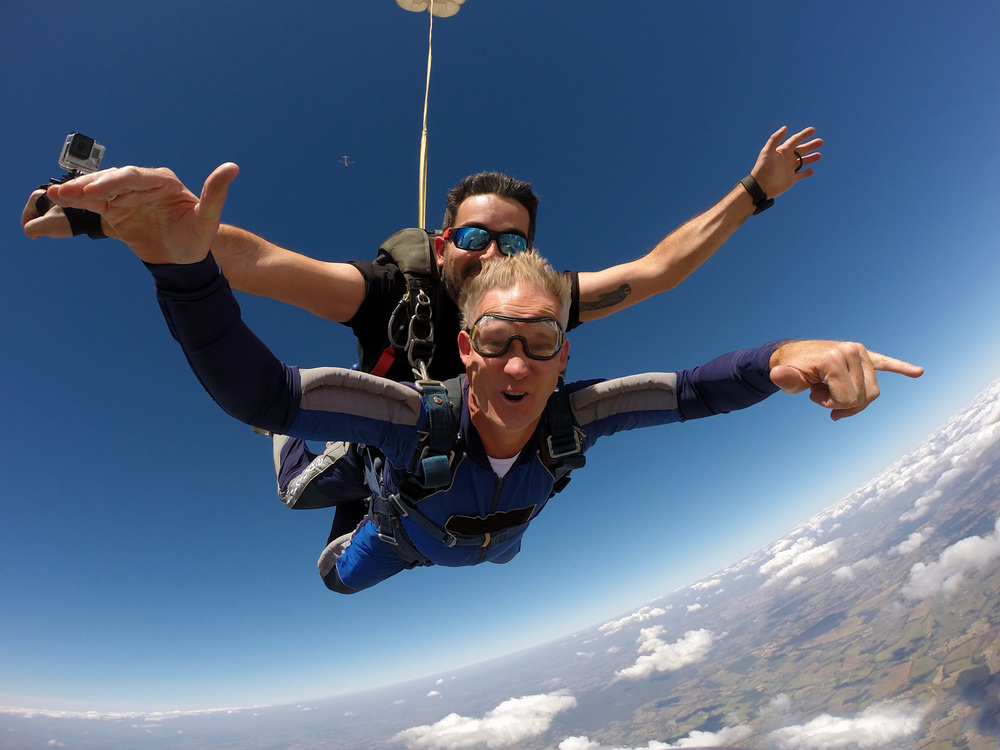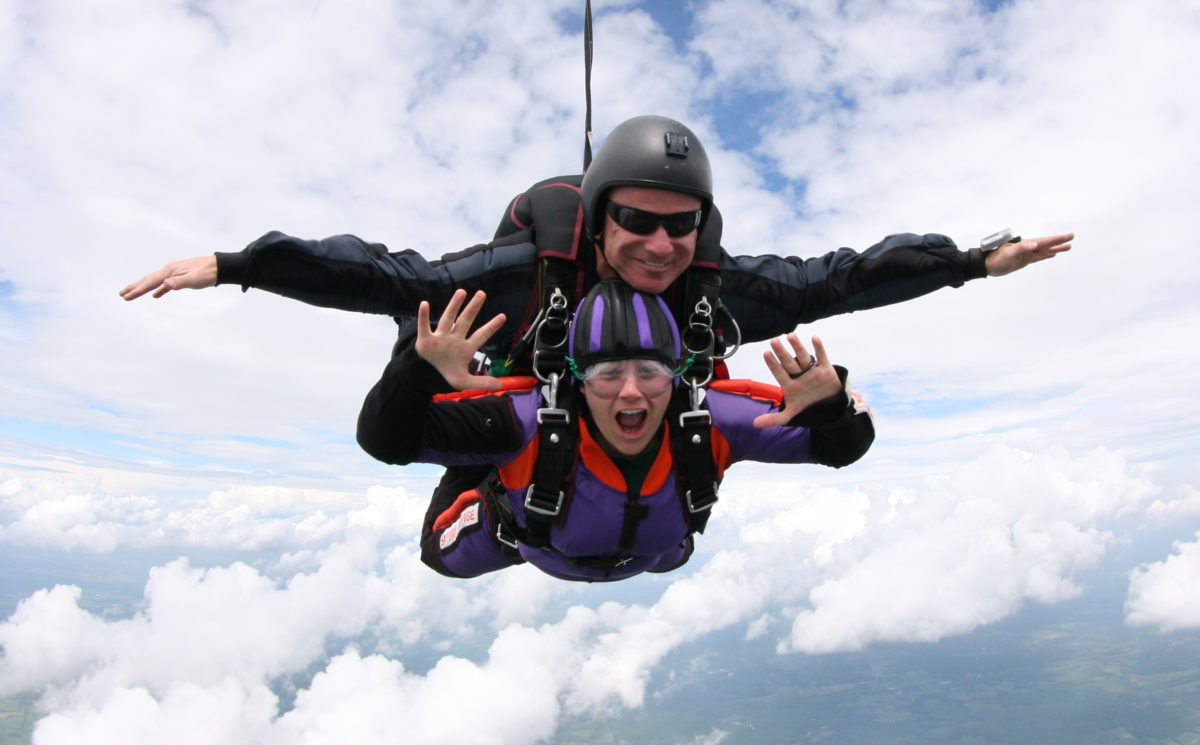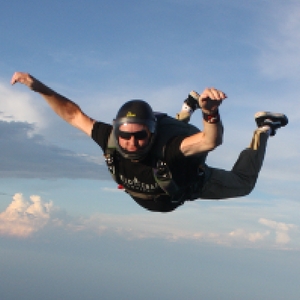
How Does Weather Affect Skydiving?
Thursday, March 21, 2024
- Skydive Orange
- 3/21/24
- 0
- General
When you’re freefalling through the blue abyss, immersed in the sky’s embrace, you’re at the full mercy of the Earth and its natural phenomena – one of those things being weather. Weather affects every aspect of the skydiving experience, from freefall to landing. Weather plays a crucial role in skydiving operations, and it’s usually the first thing we look at when determining our plan for the day.
What are the Factors That Affect Skydiving?
There are plenty of factors that affect skydiving, but when we are speaking about whether there are three main factors that we look at when deciding to jump:
- Clouds
- Rain
- Wind
Regardless of the situation, if just one of these above factors is off, skydiving may be put on a pause, or “weather hold.”
What about temperature? Temperature is another consideration when it comes to weather conditions and skydiving, while it plays a huge role in skydiver comfortability, it’s not exactly a crucial piece of determining the likelihood of daily skydiving operations. However, some dropzones will completely shut down during the winter months simply because most people don’t enjoy skydiving in subzero temps. Brr!
How Does Weather Affect Skydiving?
Weather affects skydiving in such a way that it can actually cancel a jump altogether. Jumping in poor skydiving weather conditions could result in an unpleasant experience, and since we’re in the business of mitigating risks, it is best to opt out of skydiving in risky weather rather than adding that extra layer of danger. Let’s talk about how each weather factor can affect skydiving.
Clouds: Can you skydive through clouds?
Skydivers rely on their vision to make it back to the dropzone landing area, if anything obstructs that line of sight, we could be in for a dangerous situation – yes, that means clouds!
While clouds look pretty from the ground, they are a ball of really dense fog and almost impossible to see through. Skydivers must have full spatial awareness to keep a lookout for other skydivers or flying objects. In short, we need to be able to see the ground from the airplane at exit altitude. If the ground isn’t visible from the plane, we won’t jump.
Keep in mind that clouds do move, so even if the clouds seem broken in certain spots it is likely that they could move as you make the climb to altitude and cover up those holes. In this case, skydivers would need to ride the plane back down to the ground OR if the clouds do clear, the pilot and a Safety & Training Advisor would determine if there is a big enough space to jump through. We can determine cloud cover by using our eyes or usairnet.com to see exactly how high the clouds are, where they’re moving to, and if jumps can be performed underneath them.
Rain: Can you skydive in the rain?
After reading about why you can’t skydive when it’s cloudy, you likely already know the answer to: Is it OK to skydive in the rain? Rain comes from clouds, so …
Moreover, rain is wet, and cold, and makes for a muddy landing – which can make any outdoor adventure an uncomfortable one. Not to mention, raindrops flying at your face at 120 mph straight-up hurts! So, if you want to be comfortable while on your skydive, it’s best to wait for a clear day with minimal cloud cover.
Wind: Can you skydive if it’s windy?
Excessive winds, turbulence, and high wind gusts can significantly impact how our parachutes fly and their controllability. Excessive wind speeds can cause skydivers to drift away from the dropzone and into hazardous areas that are not designed for a parachute landing (trees, power lines, or buildings). Turbulent and gusty winds can cause dangerous rotors, affecting parachute landing and making for a bumpy parachute ride. Yikes!
We can check the winds using the Automated Weather Observation System (AWOS) and Winds Aloft, or by using an anemometer to measure the top wind gusts on the ground to make a judgment call. If winds are high at exit altitude or gusts are approaching or are above 14 knots, the risk for jumping increases, and students may get put on a wind hold.
Wind hold conditions for tandem students and higher-level licensed skydivers are more lax, whereas student skydivers and A-licensed jumper wind holds are more strict. This is because of the high-level professional parachute pilot and the design of the equipment. Regardless, we keep our tandem students’ comfort and safety at the forefront of our minds when making any weather call.

What is the Best Weather to Skydive in?
If you ask a skydiver what their perfect skydiving weather day would look like, it would be something along the lines of temperatures between 75 to 85°F, 5 mph winds, blue skies, or minimal cloud cover. This is why you may hear skydivers saying “blue skies” to each other – it is a friendly wish for good weather and more jumps!
However, weather conditions don’t necessarily have to be perfect to have a fantastic skydiving experience. As long as you are comfortable and conditions are favorable for jumping – it’s always a good time!
Weather is known for being extremely unpredictable at times, even thorough forecasts by trained meteorologists can be wrong. This means we tend to wait until the day of to make any judgment calls on the weather before deciding to cancel skydiving operations.
So, what if you show up for your jump and it’s not the ideal parachute weather? If the weather is unfavorable on the day of your skydive, we can easily reschedule your jump for another day at your convenience.
In some cases, we will try to wait it out if the weather looks like it may clear soon – this could add delays to your jump time so please bear with us! We understand that rescheduling or postponing can be extremely disappointing – we’re disappointed too! However, your safety is far more important to us and sometimes we have to make tough decisions to uphold our safety standards. Besides, waiting for good weather will make your experience even more enjoyable. Win-win!
It’s a beautiful day at Skydive Orange – book your jump today! Blue skies, friends.
The largest tandem skydiving center near Northern Virginia, Washington D.C. and Maryland.
Copyright © 2025, Skydive Orange, All Rights Reserved.
DropZone Web Design & Marketing by Beyond Marketing, LLC



